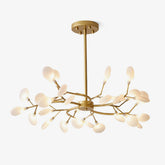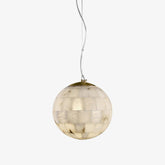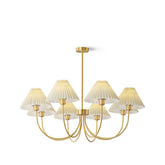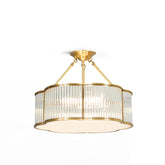How to use lighting to create a comfortable home atmosphere?

Choosing the right chandelier can be confusing if you don’t understand how to support it. Improper installation could damage your ceiling or cause safety risks.
Supporting a chandelier properly requires knowledge of ceiling structures, mounting methods, and the right tools to ensure safety and stability. This guide covers everything you need to know.
Many people focus only on the chandelier’s design and forget about installation. However, secure mounting is essential for both safety and longevity. Let’s dive into the details.
How are chandeliers supported?

A heavy chandelier can cause accidents if it’s not properly supported. You must ensure that your ceiling has the right structure to hold the weight.
Chandeliers are typically supported by ceiling-mounted electrical boxes, which must be rated for the fixture’s weight and securely attached to joists or beams.
Ceilings aren’t all built the same. Depending on your home’s construction, you may need different types of mounts to safely install your chandelier.
Types of Ceiling Supports for Chandeliers
Here are the most common ways to support chandeliers:
| Ceiling Type | Support Method | Weight Capacity |
|---|---|---|
| Drywall | Reinforced electrical box | Up to 50 lbs |
| Joist or beam | Direct mounting to joist | 50 lbs or more |
| Concrete ceiling | Special anchors required | Varies based on anchors |
Each of these methods requires different tools and installation techniques. For heavier chandeliers, you may also need additional reinforcements.
What supports a chandelier?

When you hang a chandelier, the last thing you want is for it to crash down. Knowing what holds it in place will give you peace of mind.
A chandelier is supported by a combination of an electrical box, a mounting bracket, and in some cases, reinforced joists or braces.
A regular electrical box might not be enough to support a heavy fixture. You need to ensure that the box is rated for the right weight and that it’s securely attached to the ceiling structure.
Components That Support a Chandelier
Here are the main components involved in chandelier support:
- Electrical box: The primary point of connection. Make sure it’s rated for the chandelier’s weight.
- Mounting bracket: Provides additional stability and spreads the load across a larger area.
- Ceiling joist: For heavier chandeliers, securing the fixture to a joist ensures it won’t come loose over time.
Why Reinforcement Matters
Heavier chandeliers require reinforced supports. Without reinforcement, your ceiling may sag, or the fixture could detach over time.
What makes a good chandelier?
A chandelier is more than just a light source. It’s a statement piece that defines the mood of a room. So, what should you look for in a good chandelier?
A good chandelier matches the room's style, is proportional to the space, and is built from quality materials to ensure durability and aesthetic appeal.
Choosing a chandelier isn’t just about its appearance. The size, weight, and materials all play a role in determining whether it’s the right fit for your space.
Factors to Consider When Choosing a Chandelier
| Factor | Why It Matters | Example |
|---|---|---|
| Size | Too big overwhelms a room | Dining room chandeliers |
| Material | Impacts durability | Crystal, metal, glass |
| Weight | Affects support needs | Heavy chandeliers need more reinforcement |
| Style | Should match room decor | Modern vs. traditional |
The Importance of Proportion
Make sure your chandelier is proportional to the room. A small chandelier in a large room will look out of place, while an oversized chandelier can make a small space feel cramped.
How to Choose the Right Size
A simple formula to follow:
- Add the room’s length and width in feet. The sum should match the chandelier’s diameter in inches.
For example, a 12’ x 14’ room would need a chandelier about 26 inches in diameter.
How do you describe a chandelier?
When describing a chandelier, you need to capture both its functionality and its design. This helps others understand its role in a space.
A chandelier is a decorative light fixture that hangs from the ceiling, often featuring multiple arms and bulbs for a stylish lighting effect.
The description should include the chandelier’s style, material, and size. These details help people visualize how it will look in a space.
Key Elements of a Chandelier Description
Here’s how to break down a chandelier description:
| Element | Description Example |
|---|---|
| Style | Modern, classic, rustic |
| Material | Crystal, metal, wood |
| Size | Diameter and height |
| Bulb type | LED, incandescent, etc. |
Example Description
Let’s look at a detailed example:
This modern crystal chandelier features a sleek chrome finish with cascading glass beads. Measuring 24 inches in diameter and 30 inches in height, it accommodates six LED bulbs for a bright, energy-efficient glow.
Why Descriptions Matter
A good description paints a picture. It helps clients or designers imagine how the chandelier will look and whether it fits the intended space.
Conclusion
A well-supported chandelier not only enhances the room’s beauty but also ensures safety and durability. Always choose the right support system to avoid future issues. The right chandelier, paired with proper installation, makes all the difference.









